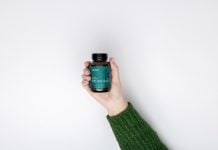
Toothpaste Ingredients to Avoid for Your Health
Most of us, religiously brush and floss to enjoy good oral hygiene and to maintain good oral health in the long run. Notably, a significant percentage of the world’s population is leveraging toothpaste for routine brushing. For instance, consumers in the US alone purchase approximately 400 million tubes of toothpaste annually.
Toothpaste Ingredients to Avoid
Enough of history and statistics! Have you ever been curious enough to explore the grain of reality behind the poison warnings featured on most toothpaste labels?
Or prefer inoculating yourself from the possible dangers of the product by being positive, having a good attitude, and looking at the brighter side of brushing with your favorite brand of toothpaste?
Regardless, you should visit North End Dental for a consult or check-up to keep your teeth healthy.
Potentially harmful chemicals are present in most brands of toothpaste
In 1997, the Food and Drugs Administration agency made it mandatory that all fluoride toothpaste sold in the US have a poison warning on their packages.
 The agency required the warnings to be readily presented to consumers because fluoride toothpaste presents a potential danger of acute poisoning, especially to children who swallow them.
The agency required the warnings to be readily presented to consumers because fluoride toothpaste presents a potential danger of acute poisoning, especially to children who swallow them.
Despite fatalities from fluoride ingestion being a rare occurrence, various research associates the ingredient with other complications such as skin rashes and impaired glucose metabolism.
Over the years, more consumers are opting for safer toothpaste options that do not include harmful ingredients. You can read more on such toothpaste products from multiple sources published online.
Other potentially harmful toothpaste ingredients to avoid are:
Sodium Lauryl Sulfate (SLS) in toothpaste
SLS is a chemical compound responsible for foaming in most personal and home care products.
Often, most toothpaste brands categorize SLS under surfactant, which is a compound that lowers the surface tension between two liquids such as water and oil, thus making them more slippery.
As a surfactant, SLS allows the various ingredients in the toothpaste to spread evenly through the user’s mouth.
Despite SLS producing foam in the mouth while brushing, the ingredient contributes nothing to one’s oral health. Instead, some users experience irritation and allergic reactions to the element that may amount to canker sores in the mouth.
Triclosan in toothpaste
Triclosan is an antibacterial agent present in most personal care products, among them being most toothpaste brands. Various studies on products that contain triclosan indicate that such products present potential negative health consequences.
Triclosan has been linked to promoting the development of resistant bacteria, alteration of normal hormonal function, impaired muscle function, among a series of other complications.
Notably, the FDA has, over the years, been banning some cleaning products using triclosan after the companies behind the products failed to produce research demonstrating the effectiveness of triclosan vis-a-vis other alternatives.
Wrap-Up
Overly, while shopping for toothpaste, always be on the lookout for brands that are free of fluoride, SLS, triclosan, and artificial sweeteners.
These will help you achieve excellent oral care and afford a beautiful smile; while also preventing you from exposing yourself to potentially harmful ingredients that can serve health complications in the long run.



